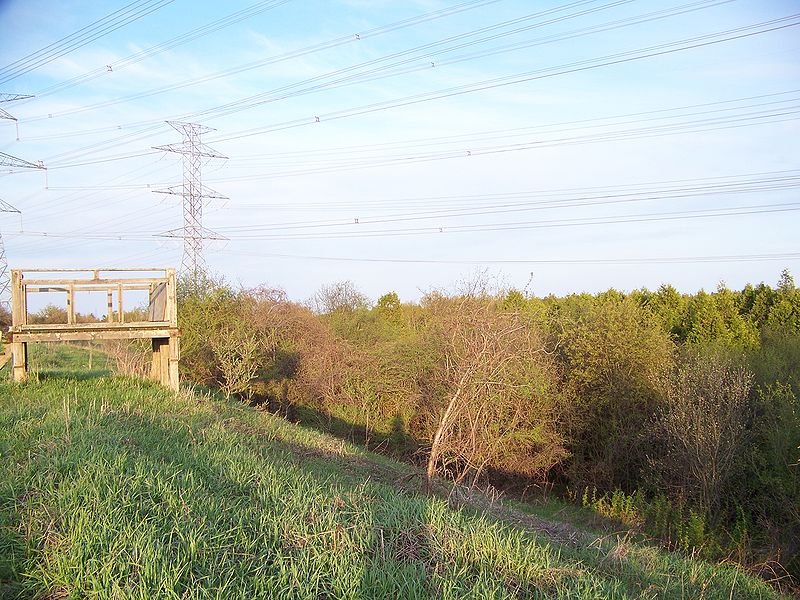Photos will have to wait until I have a laptop again, but one of my favorite field locations that weekend was on the shore of Lake Iroquois, where we could see strand lines of the ancient lake, as well as rounded boulders pushed up on the lakeshore by storms 13,000 years ago. (Some of the local houses even used the boulders and cobbles to build their foundations, or line driveways or paths.) Here's what the shoreline looks like at the Heber Down Conservation Area in Ontario, since I can't show you any of my own photos:
 (From Wikipedia)
(From Wikipedia)Unfortunately, most of the students on the trips don't even know that they saw this field location. Why not? Because it wasn't a place where we stopped the bus and made them get off and look at something. Oh, it was on their handouts for the day - Stop 5, en route to Lockport. We didn't get out and look at a pile of boulders or the slope of the shoreline; instead, we took a road that followed the shoreline for about ten miles, with the professor and I loudly discussing the boulders and the fact that we were driving on a ridge.
Ooh, tricky. Actually, it's something that I saw my undergraduate profs do every once in a while to see if we were paying attention. My advisor's favorite car game was "guess the azimuth"; and boy, after the first few times that I didn't know where we were on a map, or what mile marker we'd just passed, or how much elevation change had just happened, I began looking like an owl, my head was swiveling so much. Fear of embarrassment builds wonderful observation skills.
Last weekend's students, however, are not going to do so well on their field trip reports, because very few of them bothered to ask why we hadn't stopped at Stop 5, much less noticed that we were on an ancient shoreline. I'm anticipating a lot of complaining about us not spoon-feeding them everything they needed to know. (Not from everyone; there were some genuinely observant and interested people on the trips, and I think they'll do all right on the reports.)
What I find astonishing is that some of these students will be complaining that they were expected to pay attention. They didn't even have to stare out the windows of the bus every second we were traveling, or ask insightful questions in between stops - they just had to read their field trip guides, which made it fairly obvious that this was a "trick" stop. For the love of little green apples, people, you barely needed to glance out the window to see that we were on a ridge and then connect it to the "You might notice that we're traveling on a ridge..." question on your handouts. Fine, none of them had ever been on this sort of a field trip before; you don't have to be a trained geologist to use your eyes, though. Is this normal for students nowadays? I mean, I was their age not too long ago, and even just out of high school I can't imagine being so offended at being asked to think just a tiny bit.
(This whole affair sort of reminds me of the "Galileo Was Right" episode of From the Earth to the Moon, where NASA gets Lee Silver to take the Apollo 15 astronauts out in the field and teach them how to be geologists. They start off much like my students - "wow, that's a rock, great, it's sparkly" - but they quickly learn the value of being good observers. It just goes to prove that even if you're not professionaly trained in geology, or even really excited about it, you can still be good at it - after all, the Apollo 15 folks managed to find a piece of anorthosite, which provided one piece of proof toward the idea that the Moon was created from a chunk of the Earth.)








1 comment:
your post brings back memories ... by the time I was done at UB I didn't want to see another drumlin ever, but now I'm feeling a bit nostalgic
Post a Comment